Physical Address
304 North Cardinal St.
Dorchester Center, MA 02124
Physical Address
304 North Cardinal St.
Dorchester Center, MA 02124
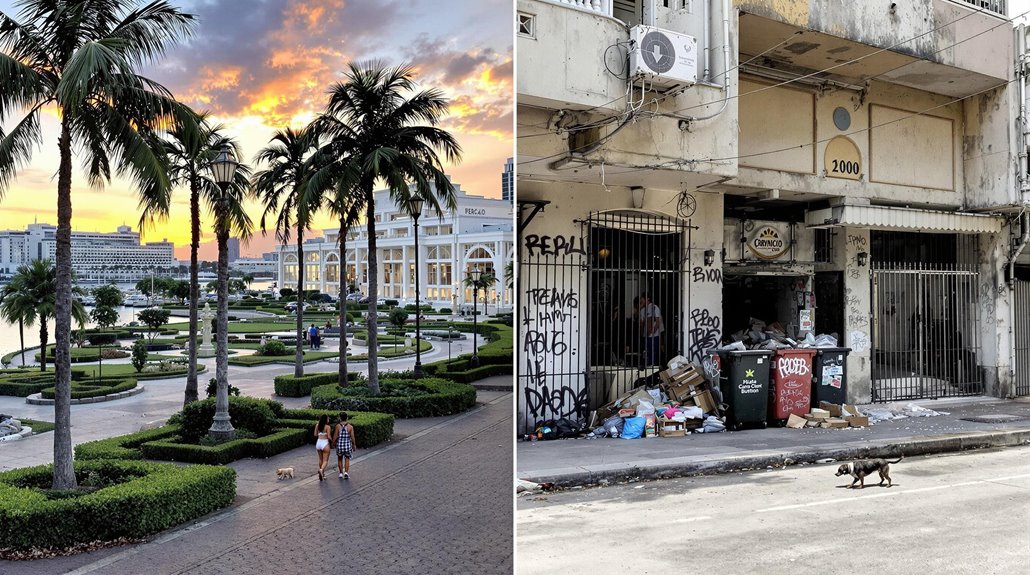
If you're considering Guayaquil for your next South American adventure, you will discover dramatically different opinions online. Some travelers praise its modernized waterfront and colonial architecture, while others warn about safety concerns that have recently intensified. Before you book your tickets, it's essential to understand what's marketing hype and what's the current reality. Let's separate the tourist brochure promises from the actual experience of visiting Ecuador's largest city.
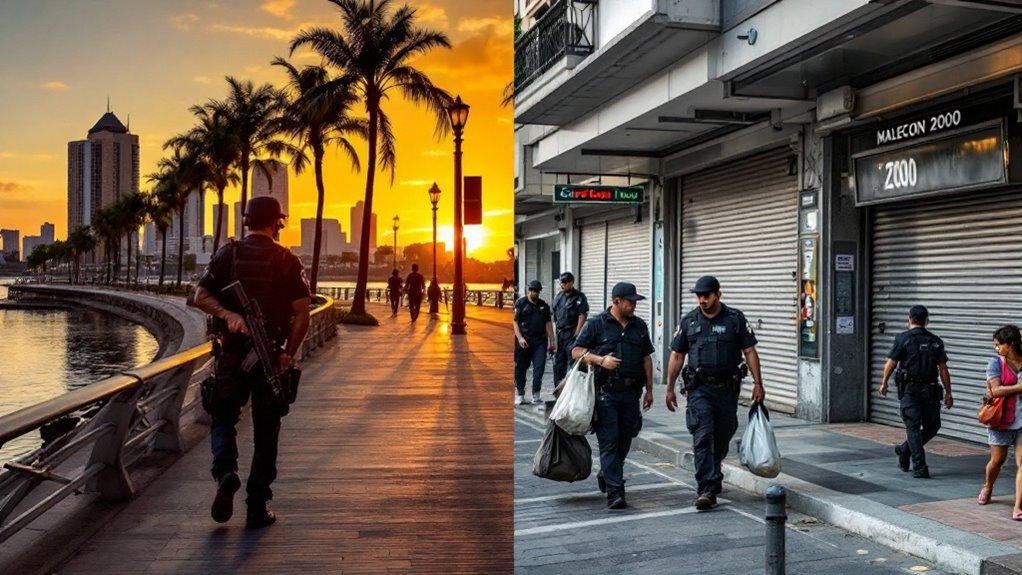
While Guayaquil once attracted visitors with its colonial charm, the city now faces unprecedented security challenges that demand serious consideration before planning a trip.
With a homicide rate of 47 per 100,000 residents, and only 11% of locals feeling safe at night, you're entering one of the world's most dangerous cities outside war zones.
The statistics paint a stark picture: 39% of residents have experienced theft, and recent narco clashes have claimed innocent lives. A troubling 51% of residents wish to permanently leave the country.
While military intervention through "Plan Fénix" has reduced homicides by 17%, extortion and kidnapping rates have increased.
If you decide to visit, you'll need to take strict precautions – stick to guided tours, avoid nighttime activities, and use hotel-arranged transportation.
Downtown Guayaquil and southern neighborhoods are particularly risky, requiring extra vigilance.
The stark security challenges have dealt a severe blow to Guayaquil's once-promising tourism sector. Before the crisis, the city thrived as a key transit point for Galapagos visitors, contributing to Ecuador's $664M tourism revenue in early 2020.
However, you'll now find a dramatically different scenario. Hotel occupancy has plunged to just 5-10% since January 2024's state of emergency, compared to pre-pandemic levels. The TC Televisión hostage incident triggered widespread cancellations, while enforced curfews from 11 PM to 5 AM have crippled nightlife activities. The tourism industry seeks guaranteed safe routes to help revitalize visitor confidence and sector recovery.
Cruise lines have redirected their routes away from Guayaquil's ports, further impacting visitor numbers. If you're planning a visit, you should know that tourism agencies now heavily rely on pre-crisis bookings to maintain operations, indicating markedly reduced current demand.
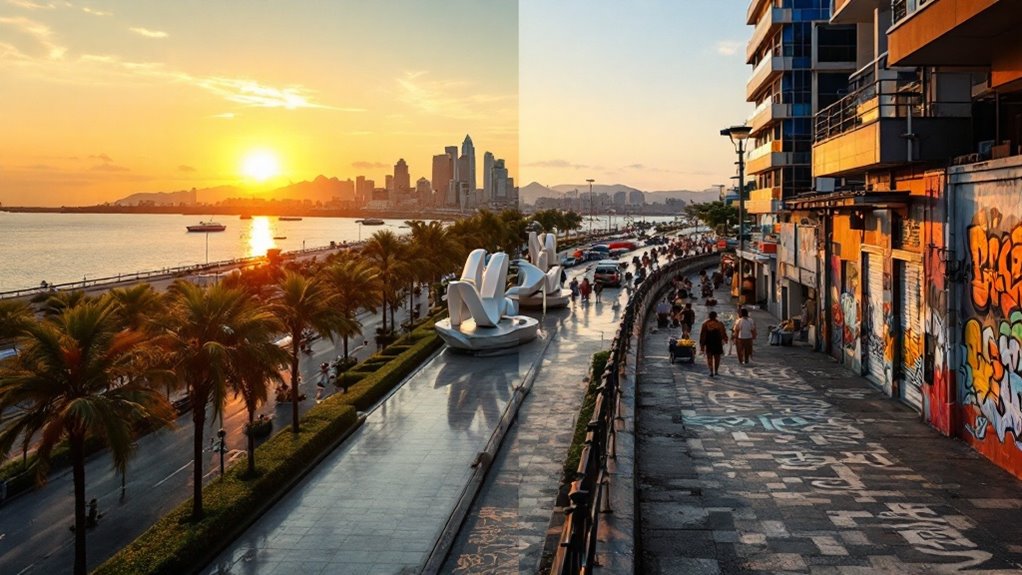
Despite Guayaquil's marketing of five major attractions, recent tourist feedback reveals significant gaps between expectations and reality.
While each site offers unique experiences, visitors often encounter practical challenges that aren't mentioned in promotional materials.
Consider visiting these attractions early morning or late afternoon to avoid heat and crowds.
The city's diverse culinary scene, centered around the Mercado Caraguay, offers authentic local dishes at surprisingly affordable prices.
Maneuvering Guayaquil's transportation system requires careful planning and local knowledge to maximize safety while minimizing costs.
You'll discover the Metrovía BRT system most reliable, with three lines charging just $0.25 per ride and deeper discounts for students and seniors.
While taxis are plentiful, you'll need to negotiate fares upfront and stick to registered services with proper ID.
For added security, use hotel-recommended drivers or apps like Uber and Cabify, especially at night.
The Moovit app helps navigate public transit routes, though you'll notice buses don't serve central areas directly.
Walking or taxis remain your only options for getting around the city center destinations.
For intercity travel, consider pre-booked shuttles to destinations like Cuenca ($80) or catch flights from GYE airport.
Just remember to secure your belongings at terminals and avoid overnight bus travel when possible.
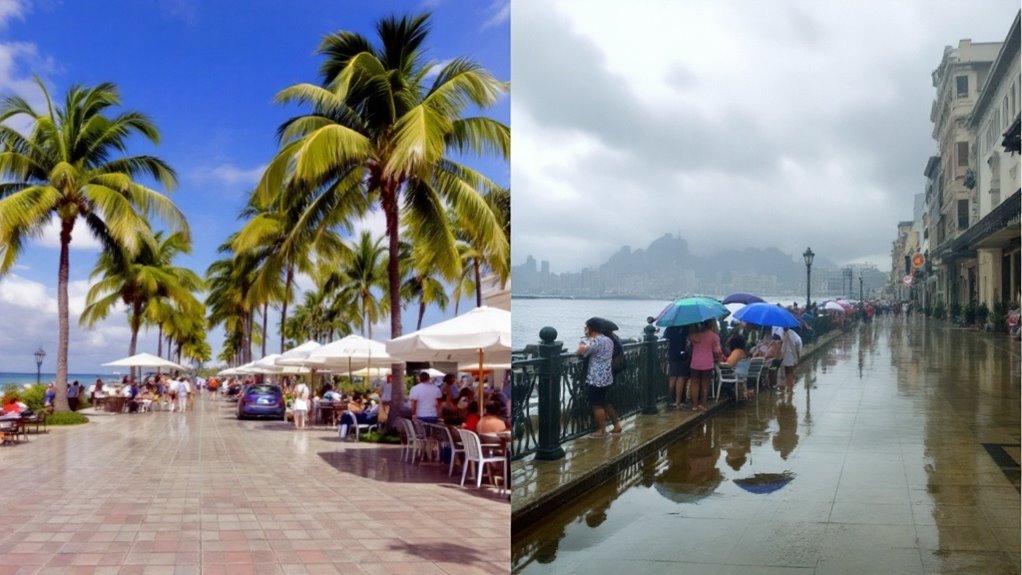
Planning your Guayaquil visit around weather patterns will greatly impact your experience and budget. The dry season (May-December) offers the most reliable conditions for sightseeing and outdoor activities, with minimal rainfall and increased sunshine.
During wet months (January-April), expect frequent downpours and reduced daylight, which can disrupt schedules and limit activities. The Humboldt Current creates cooler sea temperatures starting in May.
Pack light, breathable clothing and rain protection regardless of season.
Budget travelers should target shoulder season months (May or December) for better weather and lower costs.
Three distinct tiers of accommodation await visitors to Guayaquil, with options ranging from $23/night budget stays to luxury waterfront hotels.
High-end properties like the Wyndham offer rooftop pools and SMART TVs, while mid-range options such as GH Galeria Hotel provide reliable 24/7 front desk service in central locations.
You'll find over 50 hotels listed on major booking platforms, but it's essential to prioritize safety over savings.
While budget hostels near Malecón 2000 cost just $10-30 per night, they often lack proper security.
Skip Airbnb due to safety concerns and stick with established hotels that provide secure parking and staff support.
International chains like Marriott and Hilton dominate the market, particularly near the airport, where hotels benefit from Galapagos-bound travelers despite the city's ongoing security challenges. The renowned Hilton Colon Guayaquil stands out with its free airport shuttle service, making it a convenient choice for international travelers.
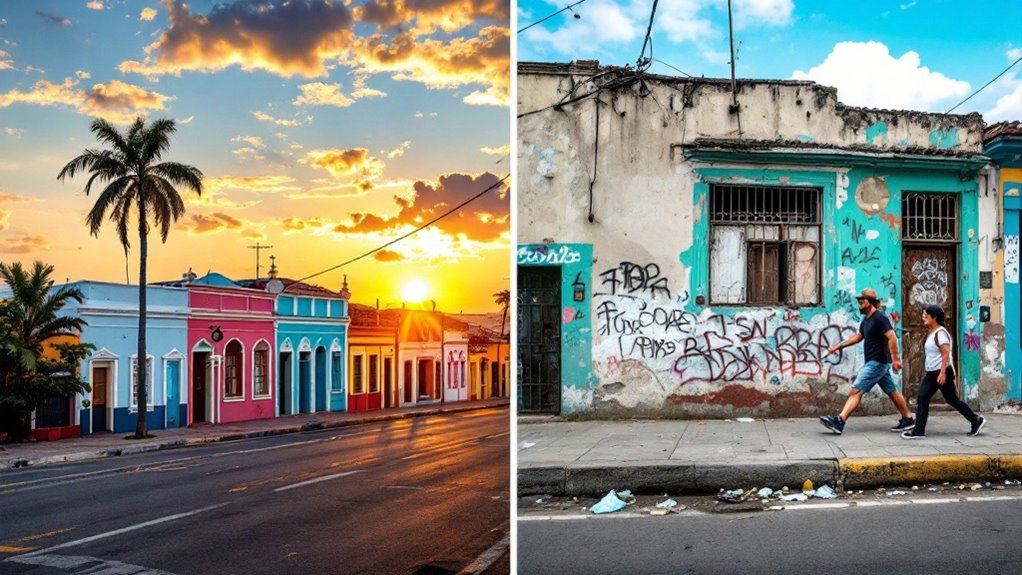
Beyond secure accommodations, Guayaquil's cultural scene presents a notable contrast between marketing and reality. While tourist brochures paint a picture of lively culture, you'll discover varying degrees of accessibility and authenticity across the city's attractions.
Successful budgeting in Guayaquil requires understanding the stark difference between advertised prices and actual costs.
While you may discover hostels advertised for $10/night, last-minute bookings can spike to $52. Plan 25 days ahead to secure the lowest rates. Consider staying at family-run hospedajes for more affordable and authentic accommodation options.
Transportation costs are predictable – city buses at $0.25/ride and taxis at $3-4 for short trips.
However, you'll need to factor in unexpected expenses like the 3-5% credit card fees and mandatory tips for guides (10-15%).
For food, local markets and almuerzos ($2-5) offer the best value, while tourist-focused restaurants can drain your budget at $30+ per meal.
If you're planning a Galápagos extension, remember the hidden costs: $100 park fee, $20 transit card, and flights starting at $155 one-way.
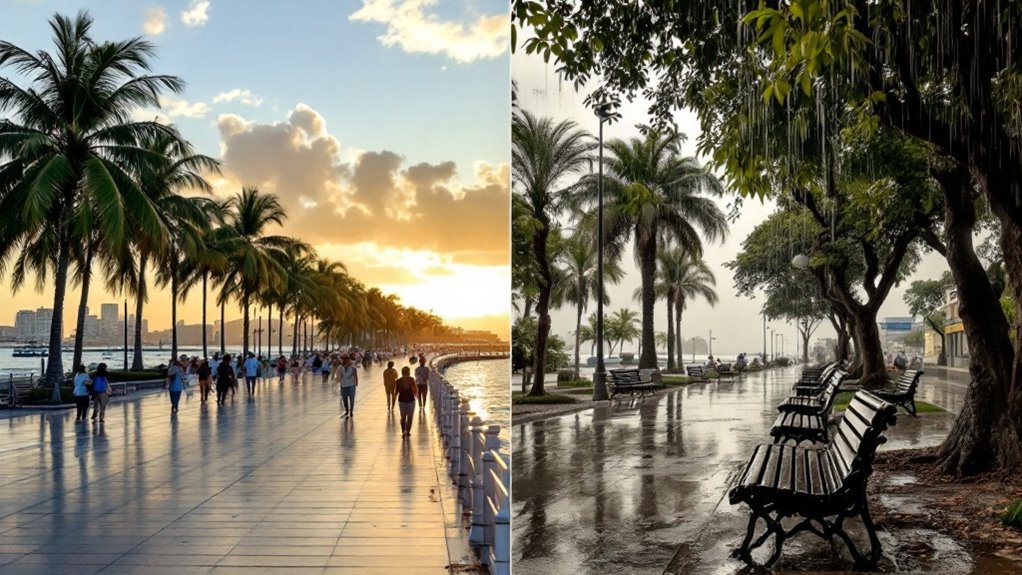
While Guayaquil welcomes visitors year-round, the dry season from June to December offers the most reliable weather for exploring the city.
You'll discover comfortable temperatures between 24-28°C and minimal rainfall, perfect for outdoor activities at Malecón 2000 and beach excursions with steady ocean temperatures of 24-25°C. December through February tends to be busier as the holiday season draws larger tourist crowds to coastal cities.
Whether you're considering Guayaquil for your next trip, you'll need to weigh the pros and cons carefully. The reality doesn't match the tourism brochures – safety concerns are real, and they'll impact your experience considerably. While you can find affordable accommodation and some notable attractions, current conditions make it hard to recommend. If you do visit, stick to daytime activities, stay alert, and consider shorter stays over extended exploration.